
Healthy Grass Is the Best Weed Preventer
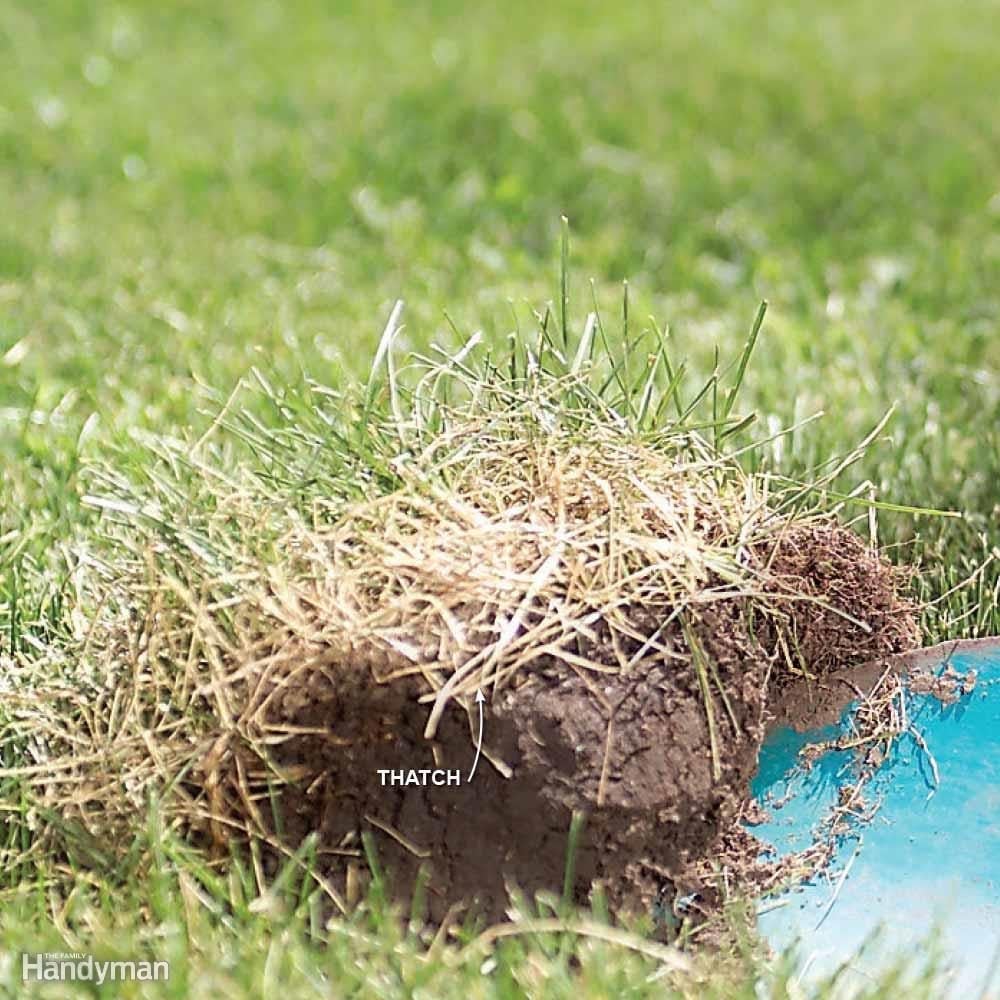
Remove Thatch
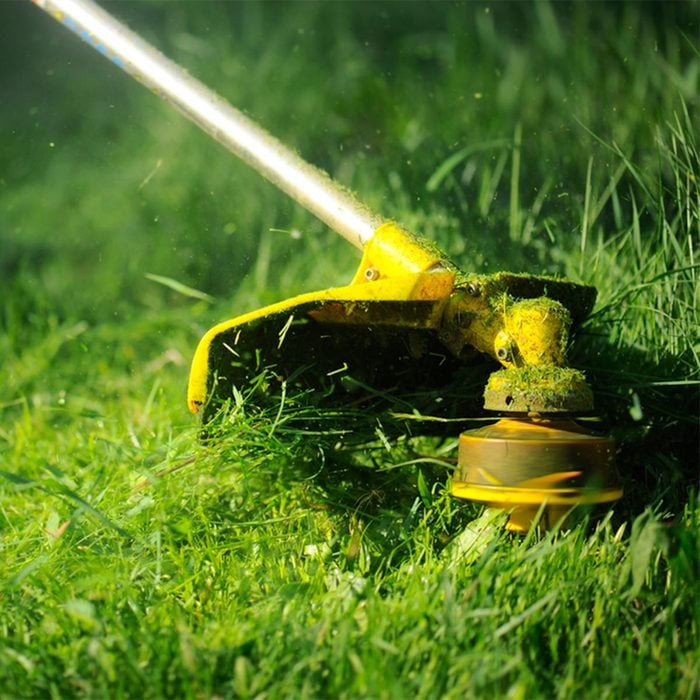
Leave Grass Clippings On The Lawn
According to a few scientists who have studied turf grass and agronomy, it seems that grass clippings won’t affect (or create) thatch like you previously believed. Turns out, grass clippings can actually help with the overall health of your lawn. This is because grass clippings are mostly made of water and have an 80 to 90 percent composition rate. Once the clippings completely dry out, there’s very little biomass. The biomass that remains is actually high in nitrogen and microorganisms, which feeds the grass and gives the soil the nutrients it needs. Here’s what you should know about biomass energy.
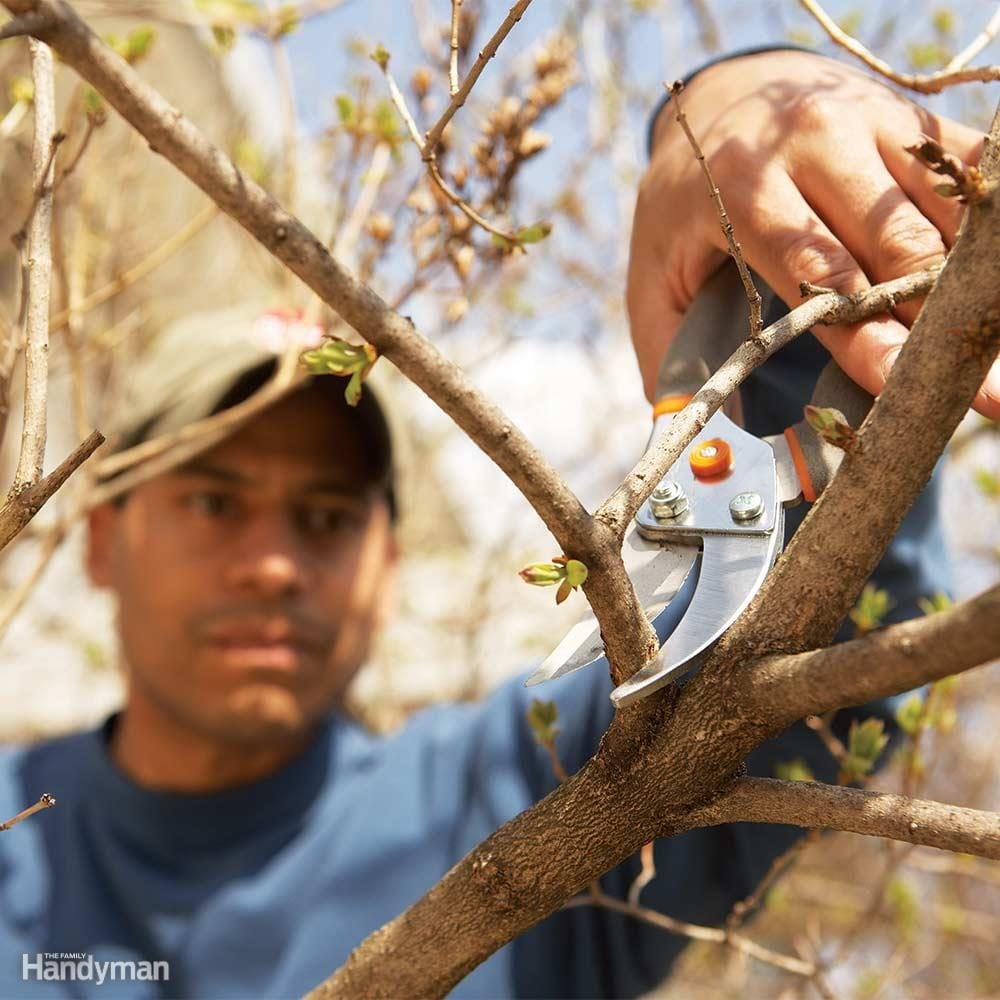
Trim Trees
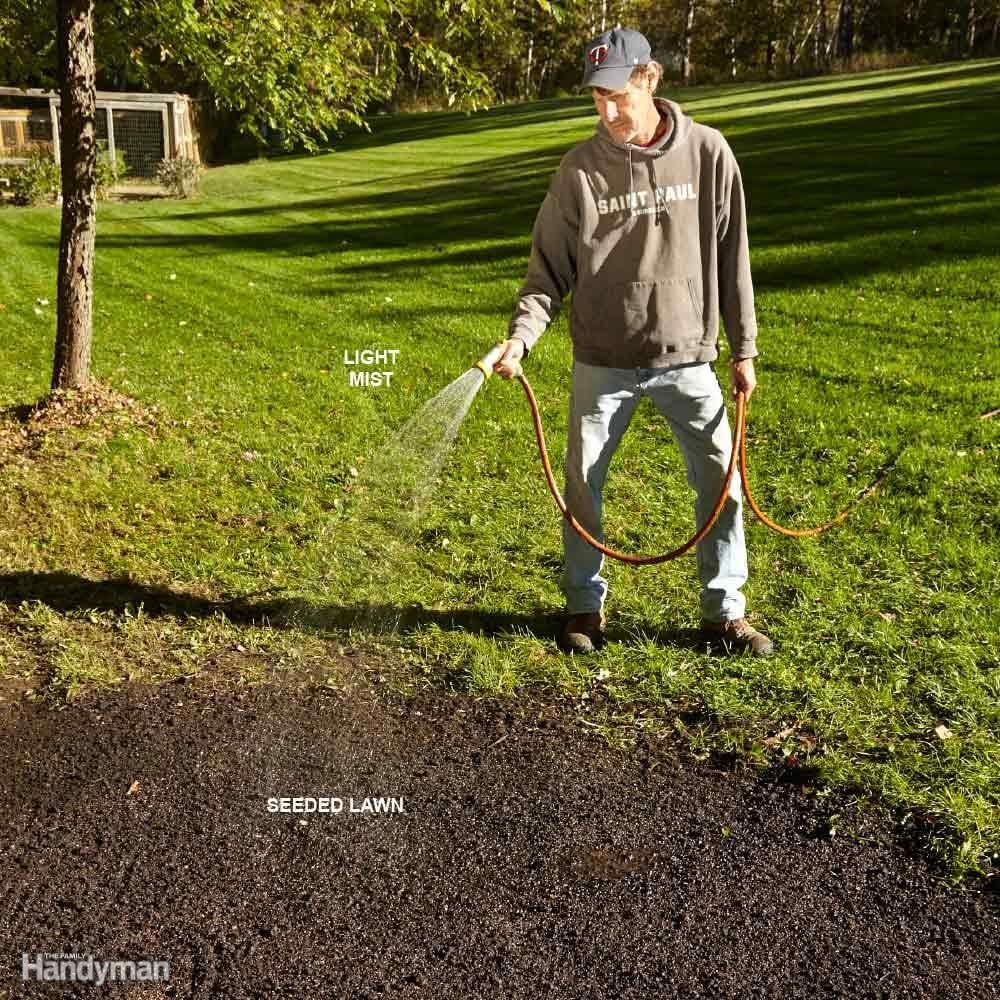
Best Way to Water Lawn: Water Grass Seed Carefully

Taller grass means a healthier lawn. It shades the soil surface, keeps the soil from drying out and reduces watering needs. Shaded soil also makes it harder for weeds to get started. If you raise your mowing height, you may even find that the taller grass chokes out existing weeds. For northern lawns, 3 in. is a great target height. For warm climates, 1-1/2 to 2 in. is best.
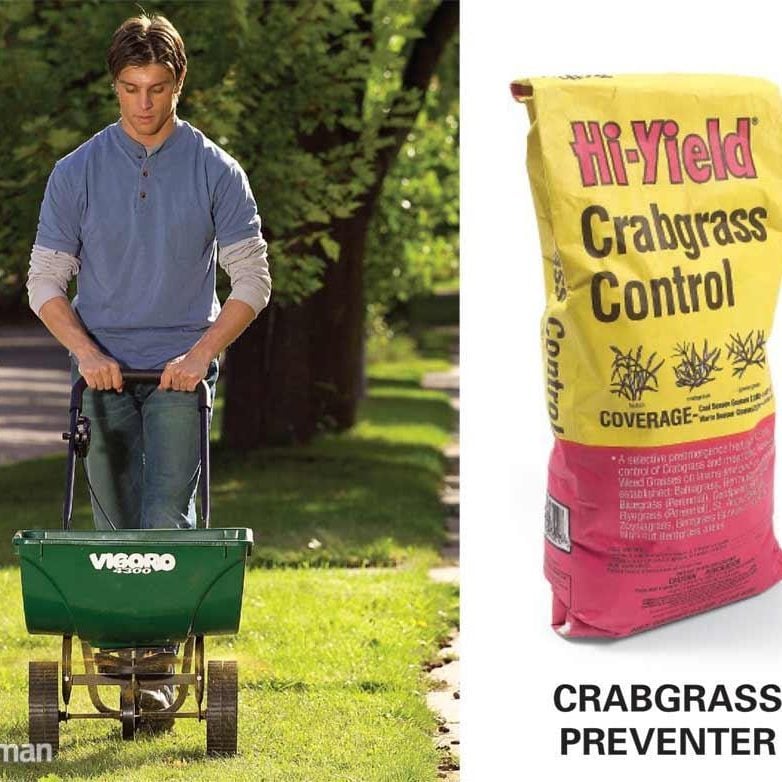
Apply a Preemergent Herbicide
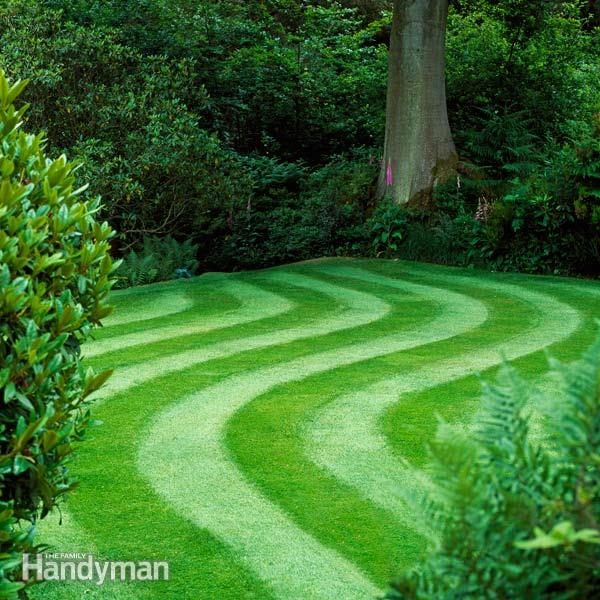
Grow Greener Grass
You’ll keep your lawn healthier, greener and thicker with a lot less effort.
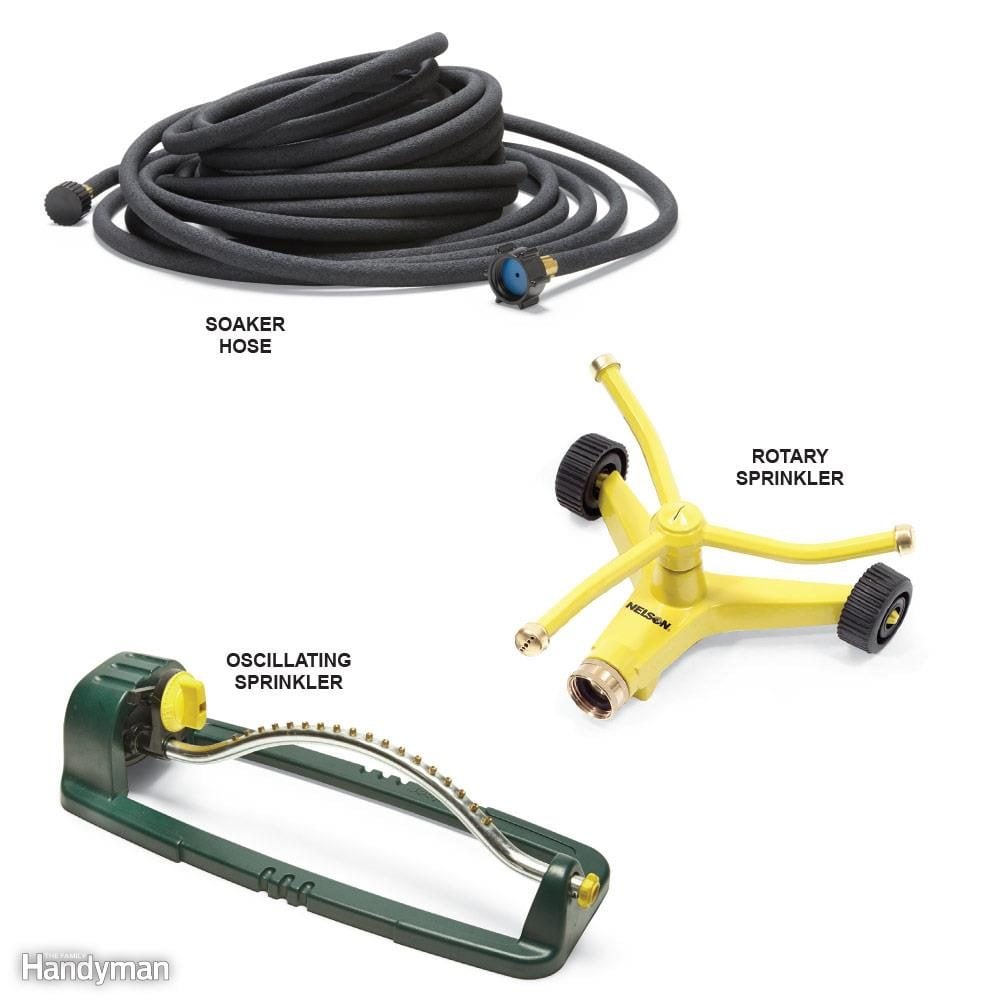
Best Way to Water Lawn: Choose the Best Sprinkler for the Location

Reseed to Prevent Weeds
Instead of applying costly pesticides, sow quality grass seed. Reseeding your lawn every year will help maintain good turf density and make it very difficult for weeds to take hold and grow. In fact, some grasses actually release a beneficial toxin into the soil that acts like a natural preemergent herbicide, preventing weeds from germinating. Reseeding with genetically improved varieties will also boost your lawn’s performance. Many newer grasses require less fertilizer, watering and mowing compared with the older grasses that are most likely in your lawn. If you haven’t reseeded in the past 10 years, you’re long overdue. Simply use your fertilizer spreader to broadcast seed immediately after core aerating. Those soil plugs lying on your lawn’s surface will dry out while you do this. After you’ve spread the seed, break up these cores with a rake. The combination of seed and pulverized soil will backfill your aerator holes, creating perfect seed-to-soil contact.
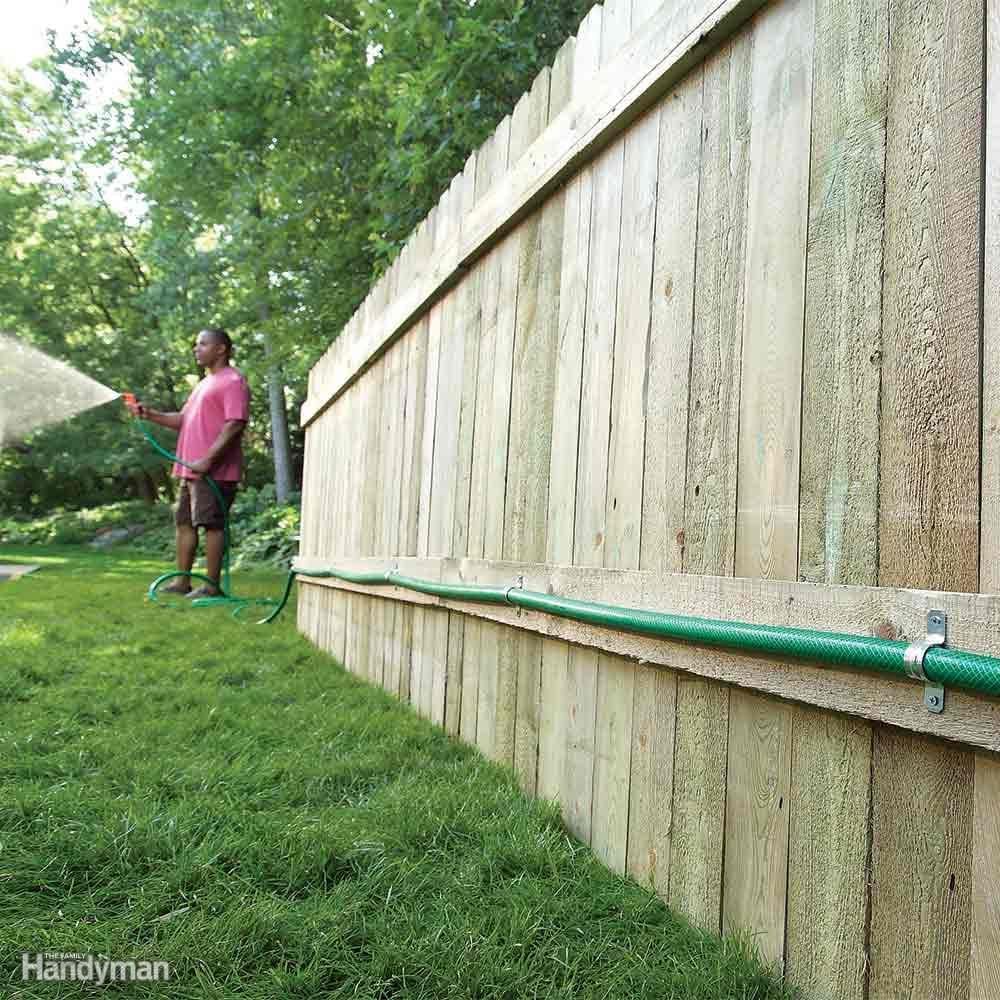
Best Way to Water Lawn: Add a Remote Hose Connection for Easier Watering

Mow Regularly
Mowing is a chore that’s easy to put off? The grass will still be there in a couple days. But delay is bad for your grass. The taller it gets, the more you’ll cut off when you finally mow. And the more you cut off, the more you’ll ‘shock’ the grass. That weakens each individual plant and leads to other problems later on. It also opens up the turf canopy and allows weeds to bully their way in.
Rule of thumb: Never remove more than one-third of the leaf blade each time you mow. And keep your lawn mower blade sharp. A clean cut reduces the chance of common lawn diseases making their way into the leaf tissue. Your lawn will look much better too.

Fertilize Just Enough
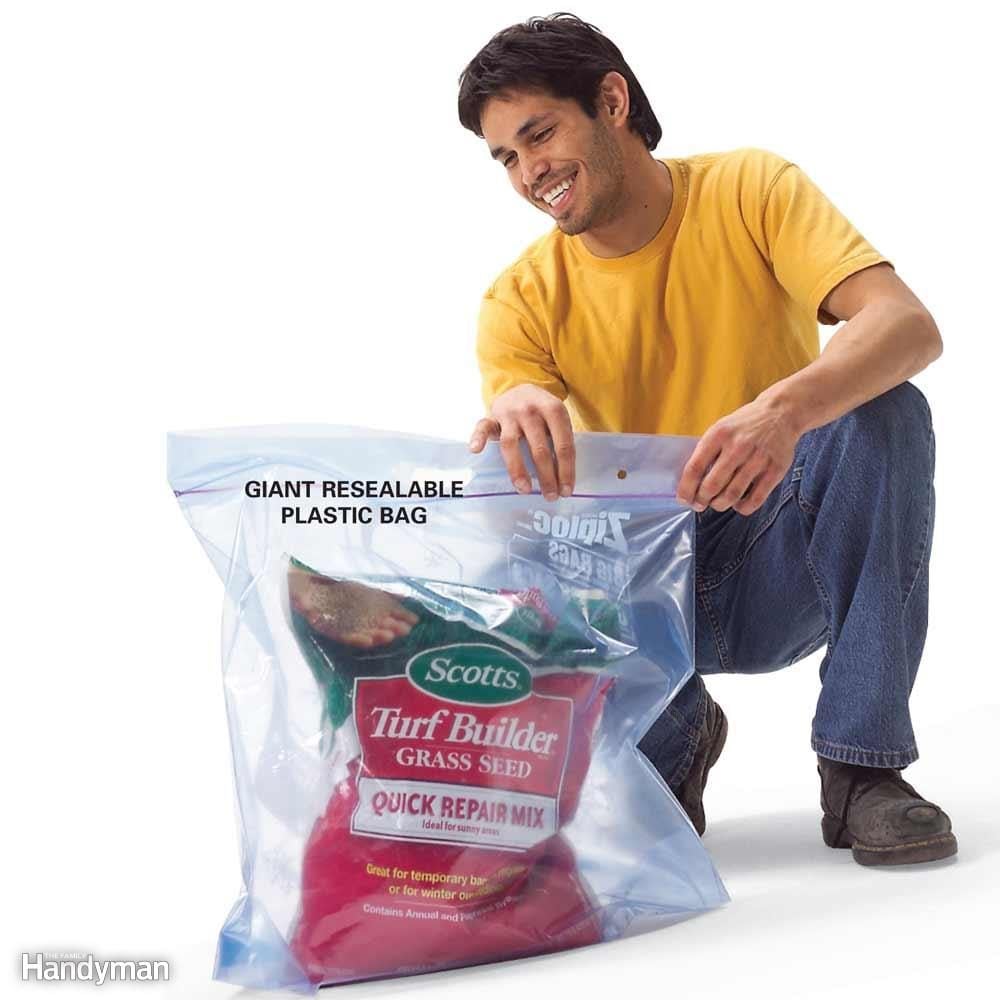
Save Your Lawn Products
Leave a bag of fertilizer or weed killer open for long and it’ll soak up moisture from the air and won’t go through a spreader. Even grass seed could use an extra layer of protection from a moisture-wicking concrete floor. Place opened bags of lawn products in large resealable plastic bags. The products will be free of clumps or pests when you need them

Reseed Bare Patches
Late summer and early fall are the best times to reseed any dead areas. Summer is just too hot for the seed to thrive. Water the new seed a couple of times a day until the grass is about 1-1/2 in. high. Don’t use normal fertilizers, however. Use a product like Scotts Starter Fertilizer, which is formulated for new grass. Spread the seed so that you have about 15 seeds per square inch. Don’t overdo it or the grass won’t thrive due to overcrowding.
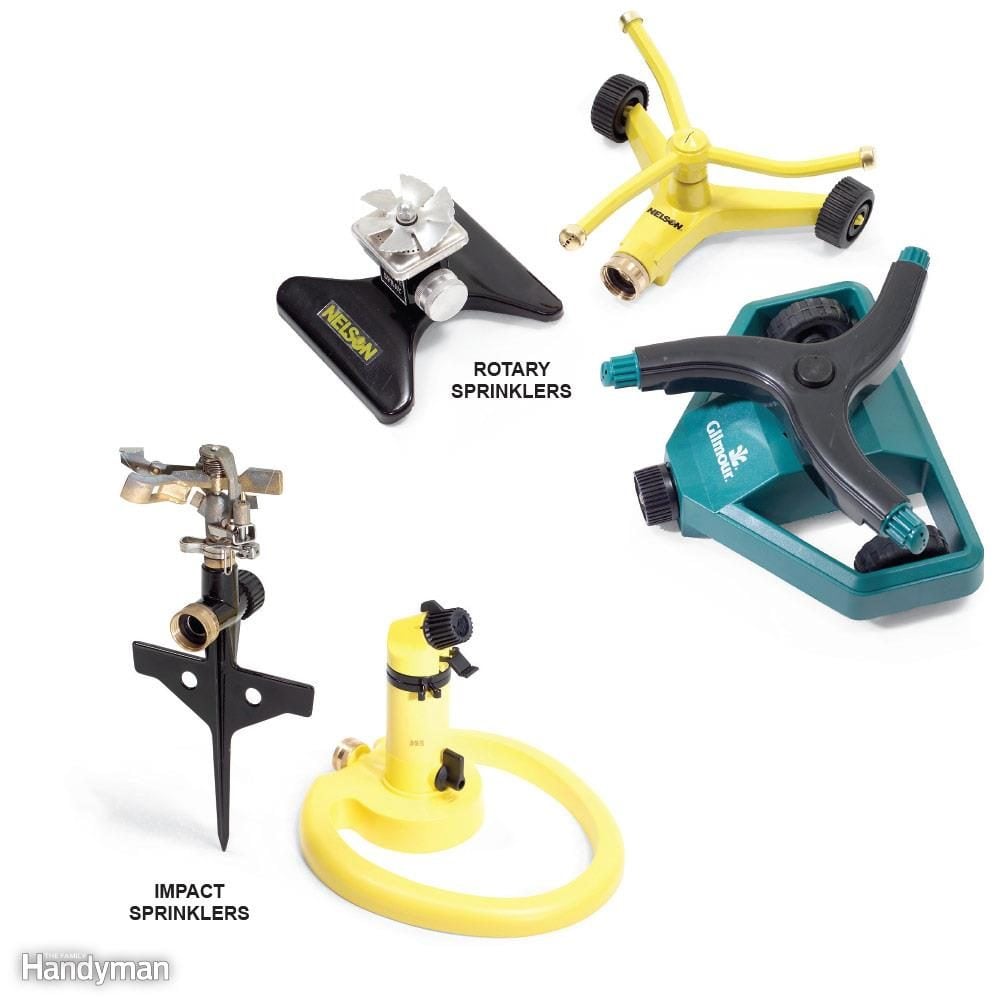
Best Way to Water Lawn: Save Water with an Impact or Rotary Sprinkler
Sprinklers that spray water high into the air or break up water into a mist are inefficient, especially if you’re watering when it’s hot and dry. A large percentage of the water will simply evaporate before it ever reaches the grass. Impact and rotary sprinklers, on the other hand, can be adjusted to keep the water nearer the ground; the water comes out in streams or large drops that fall quickly to the ground without evaporating. You’ll save water and money using an impact or rotary sprinkler whenever possible.
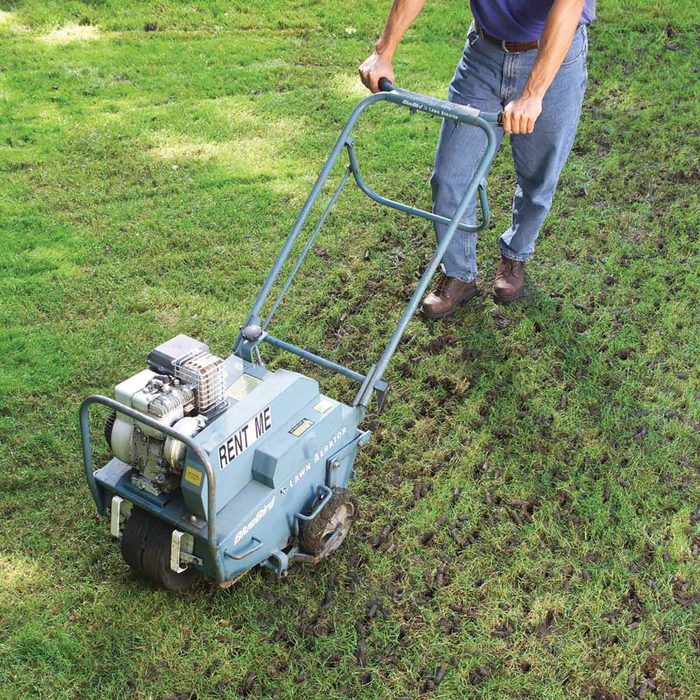
Aerate the Soil
‘Aerating’ simply means making holes in the ground by removing plugs of soil. And it’s the single most important task you can perform to maintain a healthy, good-looking lawn. It relieves compaction caused by foot traffic and creates extra pore space in the soil, allowing air, nutrients and water to enter. All of that helps roots to thrive. Aerate your lawn at least once a year, preferably in the fall. Or do it twice or even three times each year if you can. You can rent a lawn aerator at any home and garden equipment rental store. Be sure to get one that actually removes plugs of soil rather than one that just pokes holes in the ground.

Best Way to Water Lawn: Check Soil Moisture to Determine Watering Time
Common wisdom for establishing the correct length of time to water is to place a pie pan in the yard and note how long it takes to fill 1/2 in. deep. But experts prefer a more accurate method that takes soil conditions into account. Heavier soil doesn’t absorb moisture nearly as fast as loose or sandy soil, so it needs to be watered longer. After an extended warm, dry period (dry soil is the key) set up your sprinkler and set a timer for 30 minutes. Then turn off the water and check the soil for moisture depth. Do this by pushing a shovel into the lawn and tipping it forward to expose the soil. See how deep the water has penetrated. Moist soil will be darker. Your goal is to run the sprinkler until the water penetrates 3 to 4 in. into the soil. If the water has not penetrated far enough, restart the watering and continue to keep track of the time. Check again in another 15 minutes. With trial and error, you’ll eventually arrive at the optimal length of time to water for your soil type and water pressure.
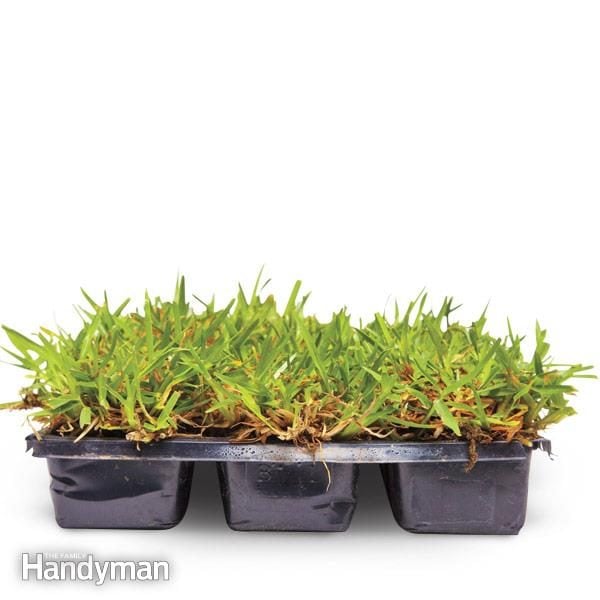
Growing Grass Under Trees
The key to growing grass under trees is to match shade-tolerant varieties with your local climate. Red and tall fescues work in cool-weather zones and St. Augustine grass works in warmer areas.
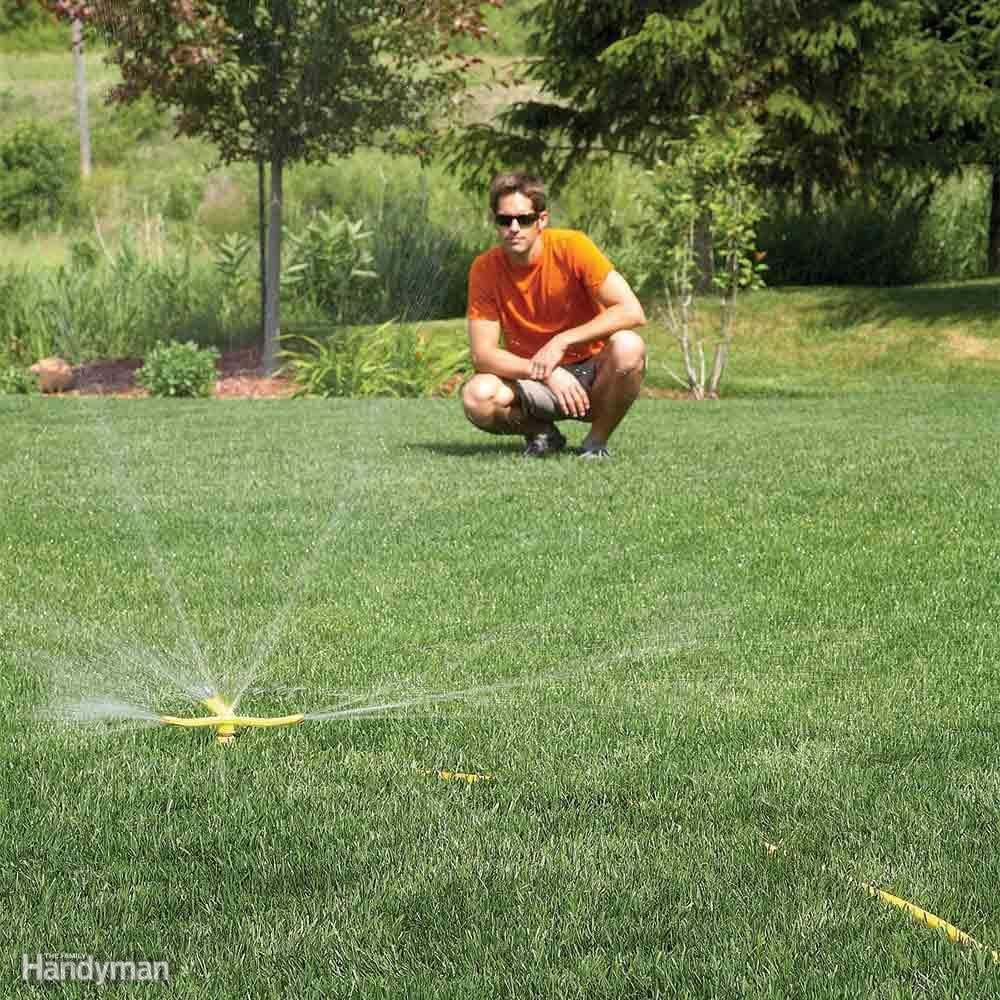
Water Less
One of the biggest mistakes made by lawn owners who have a sprinkler system is overusing it! Too much water is costly, wasteful and bad for your lawn. Water early in the morning, not during the afternoon when it’s hot or when it’s windy. More of that precious water will make its way to the roots.
Space irrigation cycles as far apart as possible. Let the grass wilt and turn a little blue before watering again. The less you water, the deeper those grass roots will go to look for it. This is a good thing! Overwatering discourages roots from penetrating deep into the soil. They are encouraged to stay close to the surface where the moisture is. A lawn with shallow roots dries out quicker. Not good.
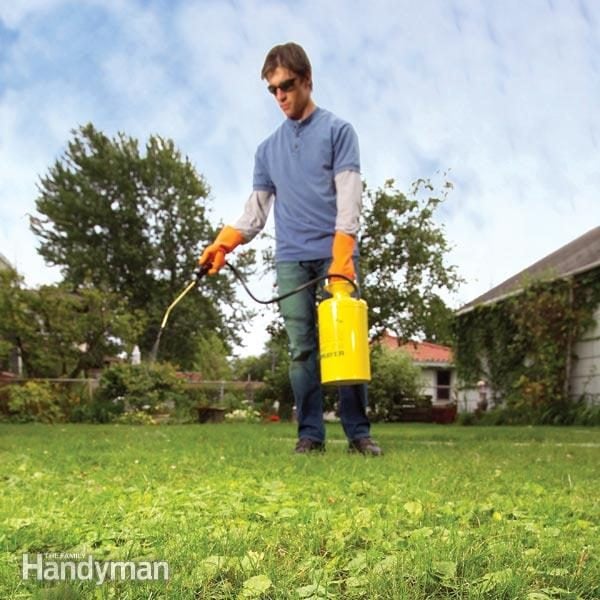
Use Weed Killers Sparingly
Eliminate weeds in your lawn and prevent their return by maintaining healthy grass, using a minimum of weed killers and good timing. We show you six strategies that simplify weed control and reduce your weed patrol chore.
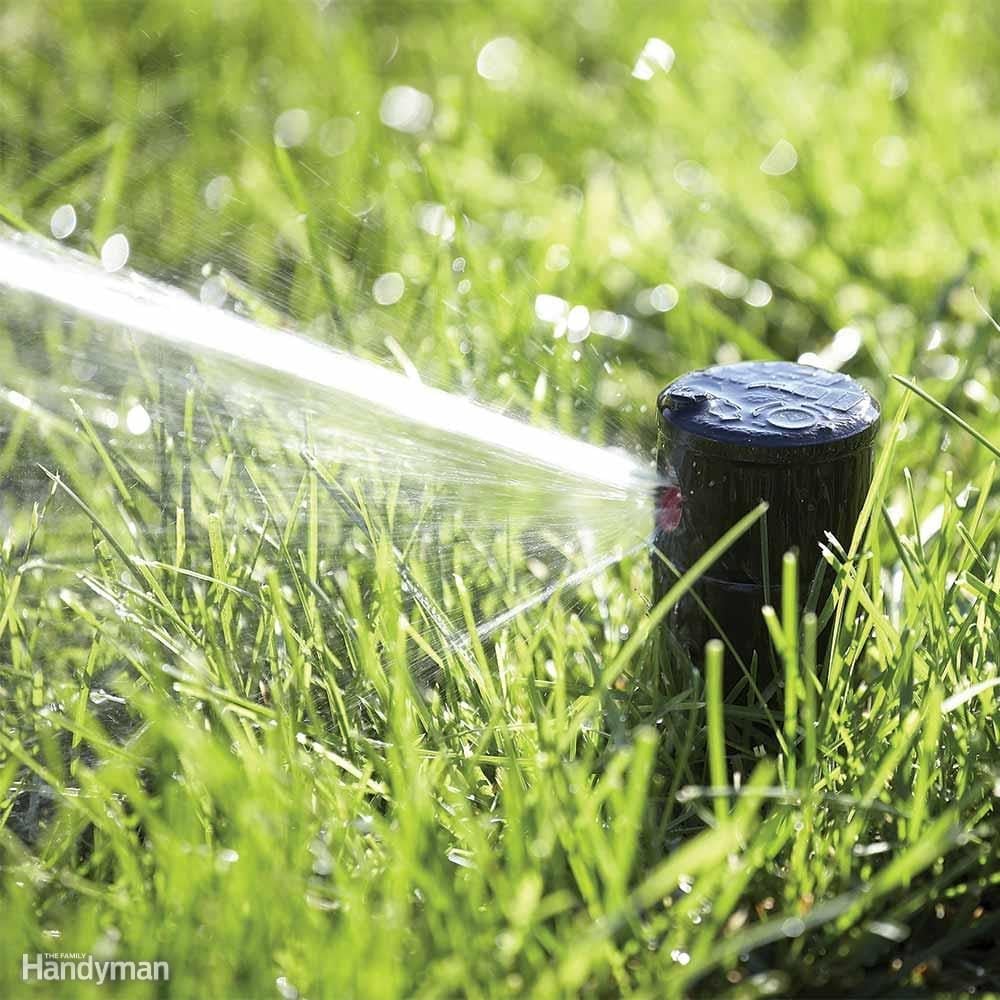
Best Way to Water Lawn: Lawn Watering Wisdom
- Adjust your watering to the conditions. Different areas of your lawn will have different watering requirements. The key is to make note of this as you water so you can tailor your watering. For example, south-facing hills may require more water; areas under trees, less.
- Keep watering in a drought. Don’t believe the common wisdom that grass goes dormant in a drought. If you don’t provide your grass some moisture in a drought, it will die.
- Water in the morning if possible. The grass can benefit from the water all day long. Plus, watering in the evening may encourage the growth of harmful fungi.
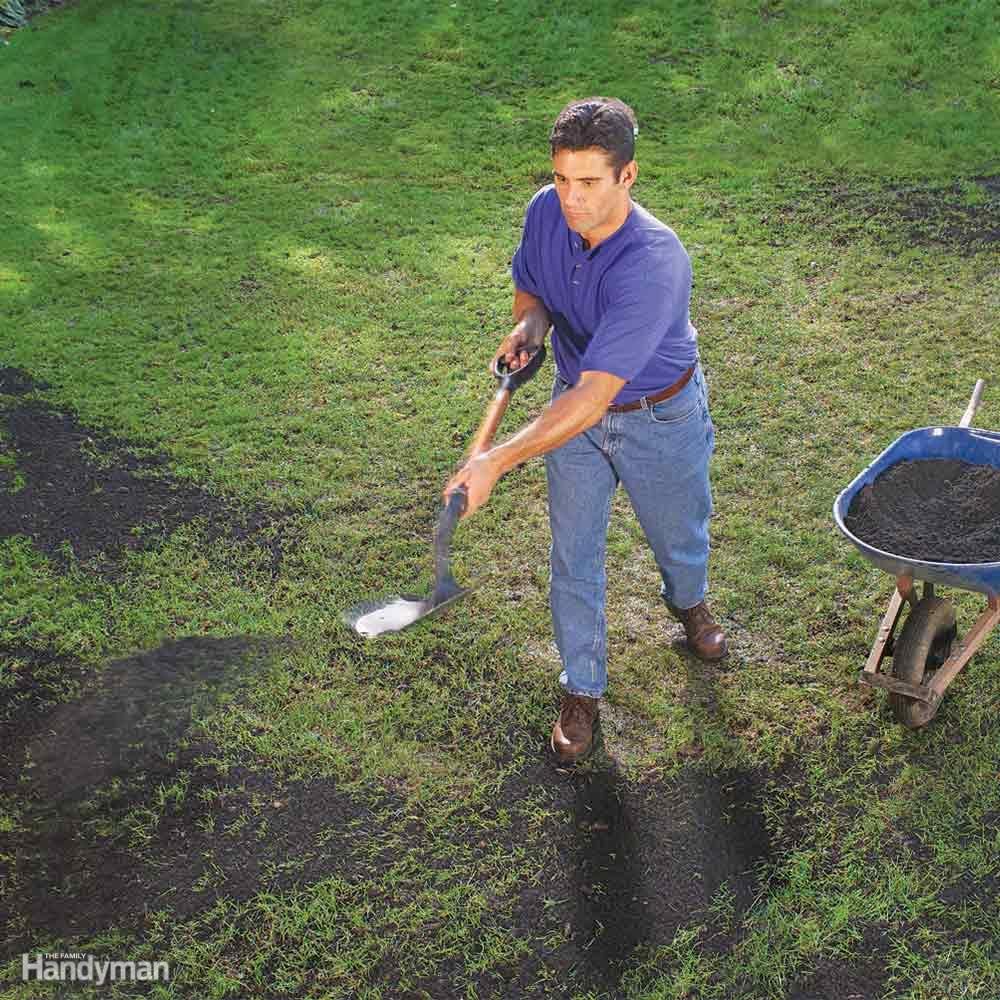
Add Compost
Top-dress your lawn with high-quality compost. Compost can bring depleted or damaged soil back to life, resulting in stronger root systems and happier plants. One teaspoon of compost contains a billion beneficial microorganisms that help create better soil structure and texture, which improves nutrient, water and air retention. To apply compost, spread it over your lawn with a shovel, aiming for a layer 1/4 to 1/2 in. thick. Then work it into the turf with a rake. It’s best to do this after aerating. Most garden centers sell bagged compost. But to cover an entire yard, you’re better off buying in bulk from a garden center. Don’t worry about buying too much?any leftovers will benefit your garden and shrub beds.
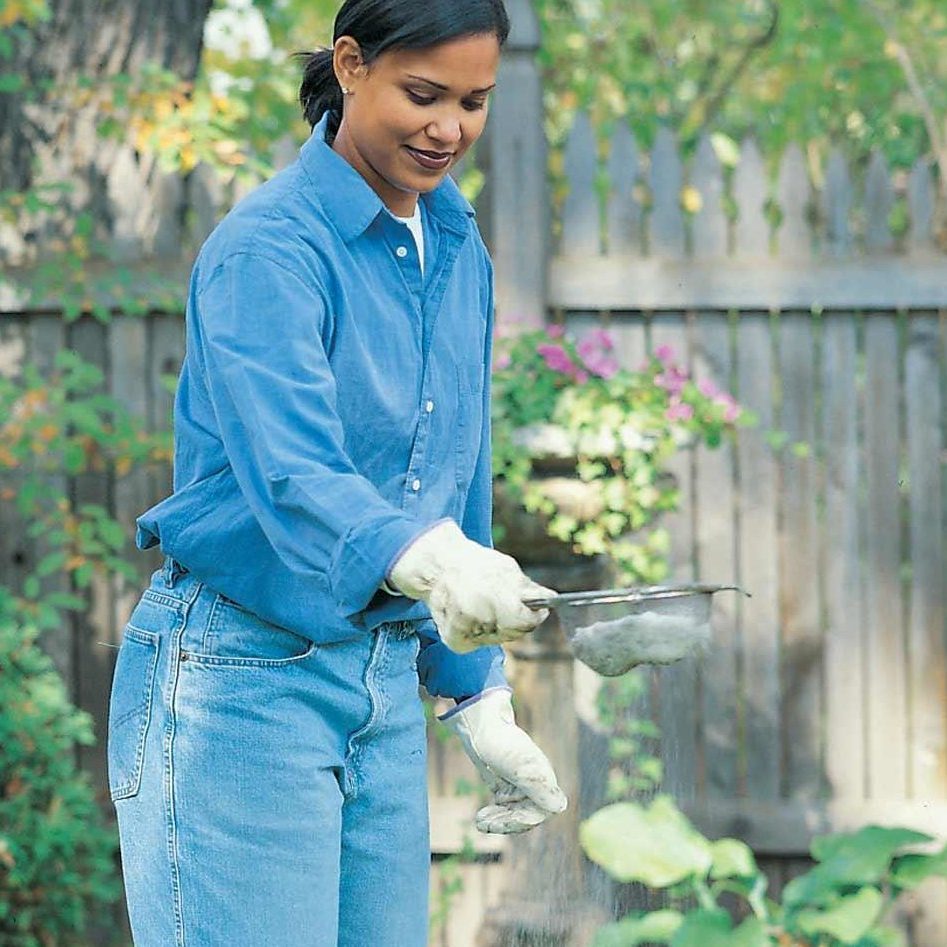
For Healthy Grass, Adjust Your Soil pH
Soil pH (acidity level) is very important, and just because your dirt looks rich and black doesn’t mean it’s the right pH for grass. Take samples around the yard and get them tested. If the pH is too low (acidic) or too high (alkaline), the grass isn’t happy to be there. But you can fix the problem by adding lime to raise the pH or iron to lower it. Most grasses prefer a pH of 6.0 to 7.2. Note: Lawn and garden centers sell do-it-yourself pH testers; more accurate tests can be performed by extension services.

Best Way to Water Lawn: Buy an Impact Sprinkler on a Tripod
Impact sprinklers are even more versatile if you buy one that’s attached to a tripod. These are great for large areas because the extra height increases the distance the sprinkler will throw water. There are other benefits too. You can easily adjust the spray pattern with less stooping, and you can direct the spray over the top of bushes and flower gardens. And finally, the adjustable legs allow you to level out the sprinkler on uneven ground. You can buy tripod impact sprinklers at home centers and garden centers.
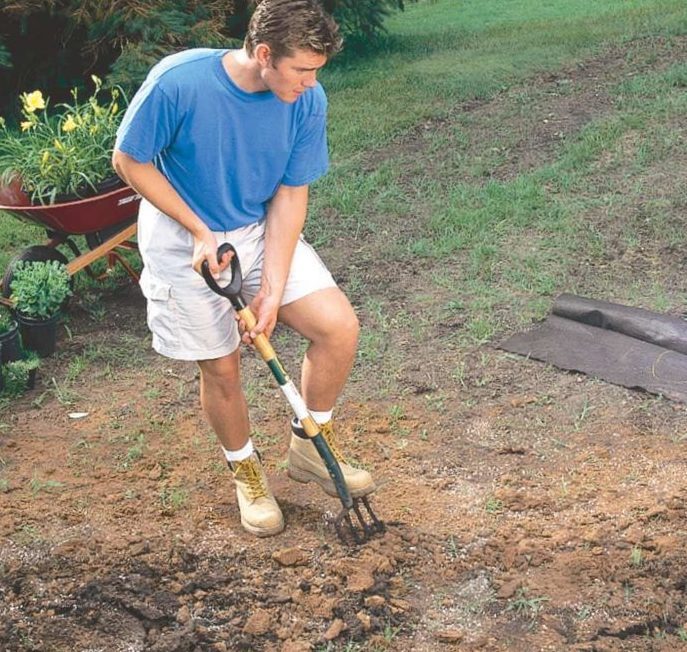
The Best Lawn Advice is Locally Grown
One-size-fits-all doesn’t work for fertilizer, weed killer and grass seed, even though that’s what the chain stores sell. Lawn products that work great in Georgia clay may not be good for Kansas or Oregon. The best way to find out about growing conditions in your area and what to put on your lawn, and when, is to talk to a local garden center or your agricultural extension service. Here’s a step-by-step action plan to get your lawn off to a great start this May.
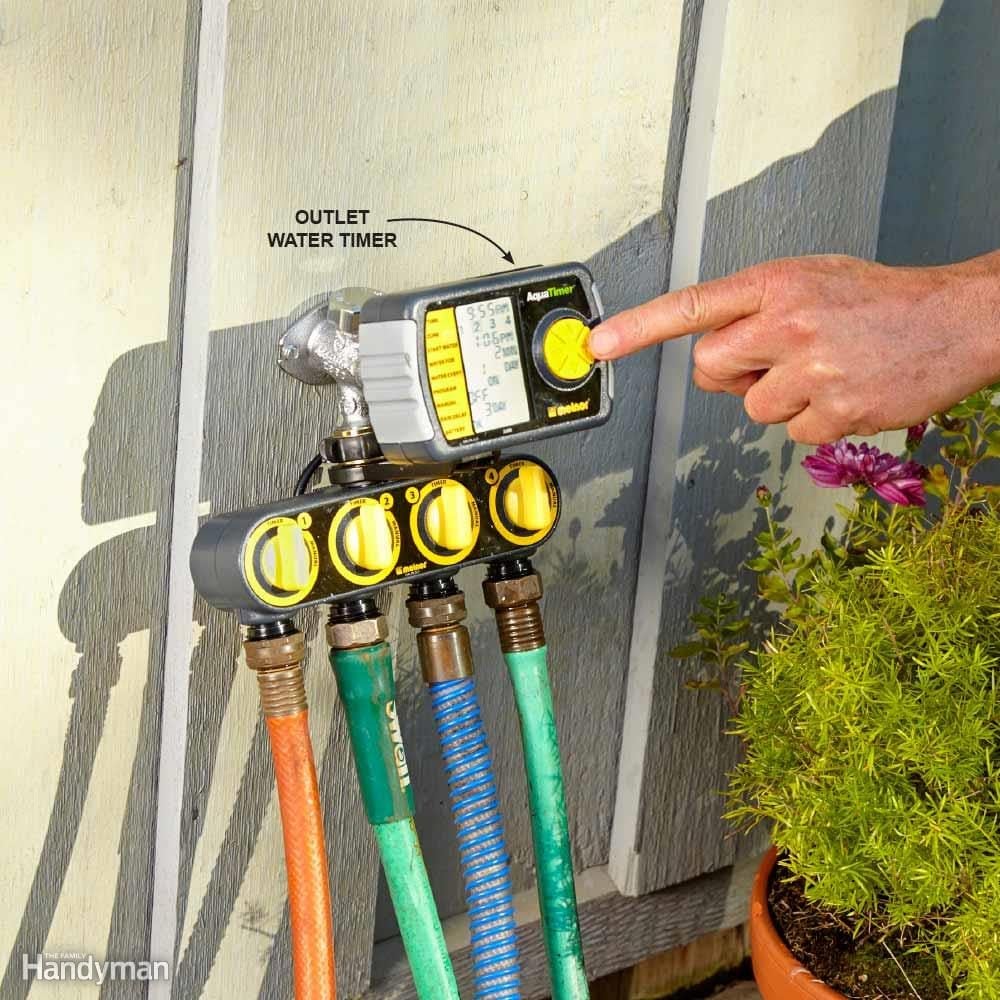
Best Way to Water Lawn: Install an Inexpensive Irrigation System
Get the convenience of an underground irrigation system at a fraction of the cost with a multi-outlet programmable water timer. Single-zone and multi-zone timers are available. Programmable timers allow you to choose the time of day and duration that the connected sprinkler will run. Read product descriptions and online reviews carefully to determine which timer is right for your situation, since different models have different functions and abilities.

Feed Shady Areas Less
People tend to overapply fertilizer to shady areas because the grass is struggling. But that just kills it faster!
Many people really have two lawns—a lawn that gets full sun for most of the day, and a shaded lawn that may get only two to four hours of direct sun—and their water and fertilizer needs are different. The grass in shady areas needs less water because less evaporates, and it needs less fertilizer because with less sun it doesn’t grow as much. When you go into shade, shift the controls on the spreader so you’re spreading about half the amount.

Best Way to Water Lawn: Run All Sprinklers at Once When Using Well Water
Constant starting and stopping will prematurely wear out your well pump. If you’re using a well to provide water for your lawn, try to connect as many sprinklers as possible to maximize water flow. This will keep the well pump running continuously and increase its life span.
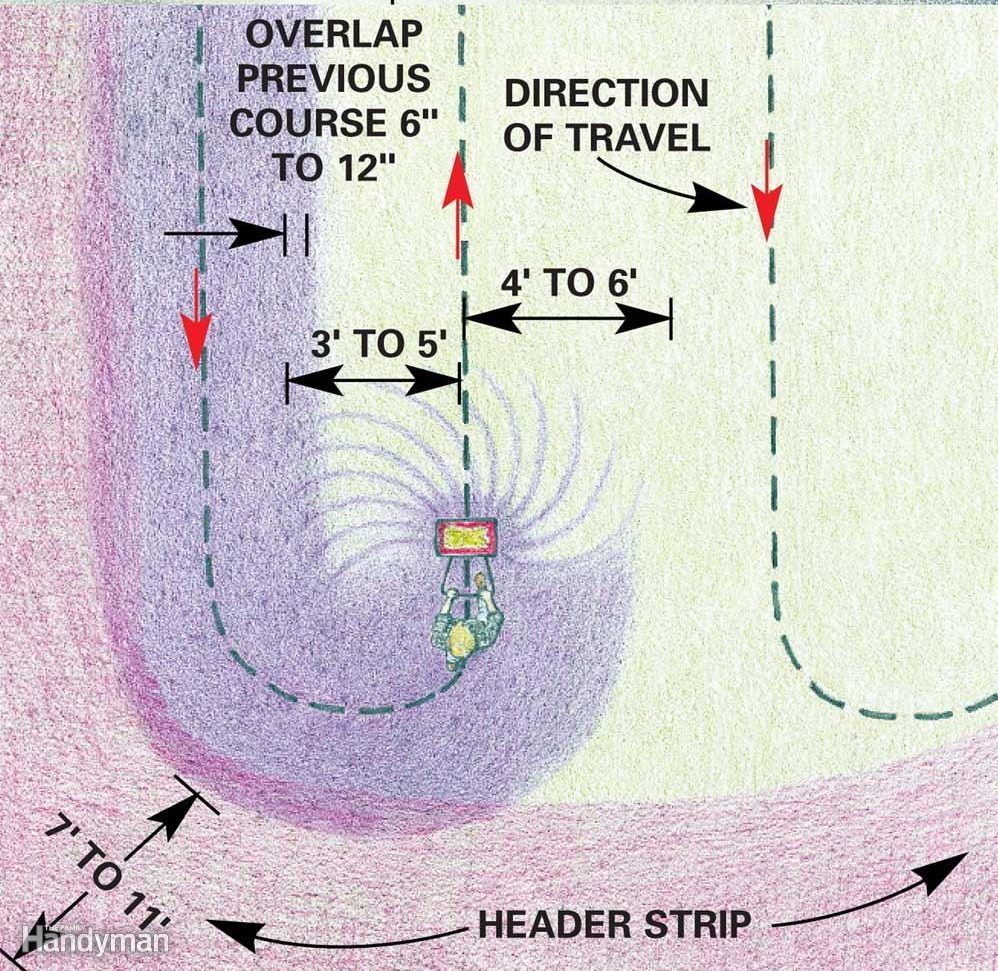
Broadcast Spreader Technique
Broadcast spreaders do a great job of spreading grass seed, fertilizer and weed killer on larger lawns because they throw the material out more consistently over a wide area. However, unless you know how much area they cover for each type of product, you can end up spreading too much or too little and get bad results. The best way to find out the actual dispersal pattern for your broadcast spreader is to do a test run on your driveway and then measure the results. Clean off a 12 x 20-ft. section of the driveway. Close the flow lever on your spreader and set the controls for the product you’re using. Fill the spreader—do this on the driveway or sidewalk to avoid spills on the grass—then open the flow lever and push the spreader several feet down the center of the driveway at your normal pace, continuing for a few steps after you close the hopper. Measure the average dispersal pattern to the sides and front. (Note: The right side of the dispersal pattern for spreaders is wider than the left side.) Sweep up the test material and dump it back into the spreader, then apply the material to your lawn, walking back and forth in the long direction on your lawn (Figure A). Overlap each course 6 to 12 in., but close off the flow when you make tight turns. Walk the spreader up the center of the driveway, then measure the total width and the width on each side. Apply a ‘header strip’ around the perimeter of the yard, then fill in the middle. Shut off the spreader when you turn.
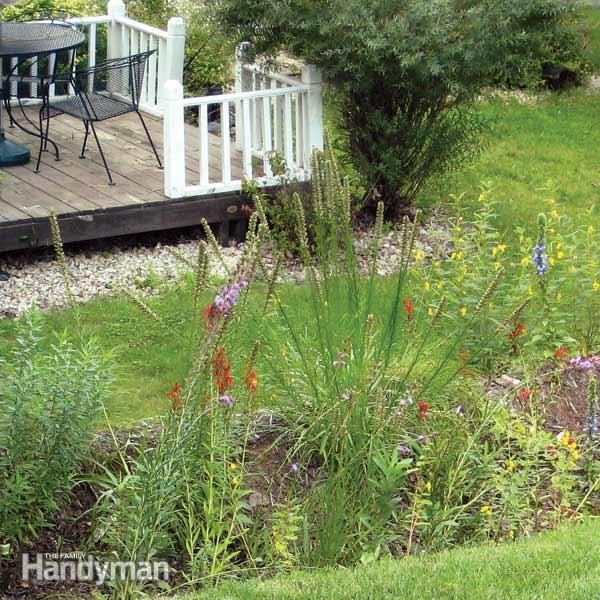
6 Common Lawn Problems and How to Fix Them
Try these expert and homeowner-tested solutions to common backyard landscape problems—eroding slopes, a shady lawn, wet soil, bad soil, mushrooms and swampy areas. Photo courtesy of EnergyScapes. Discover 6 common lawn problems and how to fix them.
